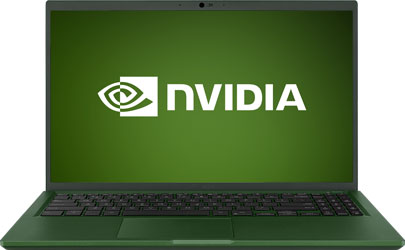Report an Error
NVIDIA GeForce RTX 2080 SUPER Mobile
- Graphics Processor
- TU104
- Cores
- 3072
- TMUs
- 192
- ROPs
- 64
- Memory Size
- 8 GB
- Memory Type
- GDDR6
- Bus Width
- 256 bit
Recommended Gaming Resolutions:
- 1920x1080
- 2560x1440
- 3840x2160
The GeForce RTX 2080 SUPER Mobile is a mobile graphics chip by NVIDIA, launched on April 2nd, 2020. Built on the 12 nm process, and based on the TU104 graphics processor, in its N18E-G3-A1 variant, the chip supports DirectX 12 Ultimate. This ensures that all modern games will run on GeForce RTX 2080 SUPER Mobile. Additionally, the DirectX 12 Ultimate capability guarantees support for hardware-raytracing, variable-rate shading and more, in upcoming video games. The TU104 graphics processor is a large chip with a die area of 545 mm² and 13,600 million transistors. It features 3072 shading units, 192 texture mapping units, and 64 ROPs. Also included are 384 tensor cores which help improve the speed of machine learning applications. The card also has 48 raytracing acceleration cores. NVIDIA has paired 8 GB GDDR6 memory with the GeForce RTX 2080 SUPER Mobile, which are connected using a 256-bit memory interface. The GPU is operating at a frequency of 1365 MHz, which can be boosted up to 1560 MHz, memory is running at 1750 MHz (14 Gbps effective).
Being a mxm module card, the NVIDIA GeForce RTX 2080 SUPER Mobile does not require any additional power connector, its power draw is rated at 150 W maximum. This device has no display connectivity, as it is not designed to have monitors connected to it. Rather it is intended for use in laptop/notebooks and will use the output of the host mobile device. GeForce RTX 2080 SUPER Mobile is connected to the rest of the system using a PCI-Express 3.0 x16 interface.
Being a mxm module card, the NVIDIA GeForce RTX 2080 SUPER Mobile does not require any additional power connector, its power draw is rated at 150 W maximum. This device has no display connectivity, as it is not designed to have monitors connected to it. Rather it is intended for use in laptop/notebooks and will use the output of the host mobile device. GeForce RTX 2080 SUPER Mobile is connected to the rest of the system using a PCI-Express 3.0 x16 interface.
Graphics Processor
Mobile Graphics
- Release Date
- Apr 2nd, 2020
- Generation
- GeForce 20 Mobile
- Predecessor
- GeForce 10 Mobile
- Successor
- GeForce 30 Mobile
- Production
- Active
- Bus Interface
- PCIe 3.0 x16
Relative Performance
Based on TPU review data: "Performance Summary" at 1920x1080, 4K for 2080 Ti and faster.
Performance estimated based on architecture, shader count and clocks.
Clock Speeds
- Base Clock
- 1365 MHz
- Boost Clock
- 1560 MHz
- Memory Clock
-
1750 MHz
14 Gbps effective
Memory
- Memory Size
- 8 GB
- Memory Type
- GDDR6
- Memory Bus
- 256 bit
- Bandwidth
- 448.0 GB/s
Render Config
- Shading Units
- 3072
- TMUs
- 192
- ROPs
- 64
- SM Count
- 48
- Tensor Cores
- 384
- RT Cores
- 48
- L1 Cache
- 64 KB (per SM)
- L2 Cache
- 4 MB
Theoretical Performance
- Pixel Rate
- 99.84 GPixel/s
- Texture Rate
- 299.5 GTexel/s
- FP16 (half)
- 19.17 TFLOPS (2:1)
- FP32 (float)
- 9.585 TFLOPS
- FP64 (double)
- 299.5 GFLOPS (1:32)
Board Design
- Slot Width
- MXM Module
- TDP
- 150 W
- Outputs
- Portable Device Dependent
- Power Connectors
- None
- Board Number
- E4914 SKU 11
Graphics Features
- DirectX
- 12 Ultimate (12_2)
- OpenGL
- 4.6
- OpenCL
- 3.0
- Vulkan
- 1.3
- CUDA
- 7.5
- Shader Model
- 6.7
TU104 GPU Notes
| Ray Tracing Cores: 1st Gen Tensor Cores: 2nd Gen NVENC: 7th Gen NVDEC: 4th Gen PureVideo HD: VP10 VDPAU: Feature Set J |
May 21st, 2024 13:37 EDT
change timezone
Latest GPU Drivers
New Forum Posts
- Would a ag620 hold a 5700x3d in stock settings? (10)
- Post your Cinebench 2024 score (463)
- Kepler BIOS Tweaker problem (15)
- What's your latest tech purchase? (20612)
- Post your cooling. (0)
- What is the best settings for i3 10100F? (0)
- Gigabyte am5 motherboard ddr5 not posting when rebooting (7)
- Why I love Gaming (13)
- TPU's Nostalgic Hardware Club (18524)
- Have you got pie today? (16343)
Popular Reviews
- Ghost of Tsushima Performance Benchmark Review - 35 GPUs Tested
- Ghost of Tsushima: DLSS vs. FSR vs. XeSS Comparison Review
- PNY XLR8 Gaming EPIC-X RGB DDR5-6400 CL32 32 GB Review
- TerraMaster D8 Hybrid Review
- Silverstone Shark Force 120 mm Fan Review
- Homeworld 3 Performance Benchmark Review - 35 GPUs Tested
- Upcoming Hardware Launches 2023 (Updated Feb 2024)
- Lofree Edge Ultra-Low Profile Wireless Mechanical Keyboard Review
- AMD Ryzen 7 7800X3D Review - The Best Gaming CPU
- AMD Ryzen 7 7700 Review - Affordable Zen 4 Powerhouse
Controversial News Posts
- Intel Statement on Stability Issues: "Motherboard Makers to Blame" (269)
- AMD to Redesign Ray Tracing Hardware on RDNA 4 (227)
- Windows 11 Now Officially Adware as Microsoft Embeds Ads in the Start Menu (173)
- NVIDIA to Only Launch the Flagship GeForce RTX 5090 in 2024, Rest of the Series in 2025 (154)
- AMD Hits Highest-Ever x86 CPU Market Share in Q1 2024 Across Desktop and Server (140)
- AMD RDNA 5 a "Clean Sheet" Graphics Architecture, RDNA 4 Merely Corrects a Bug Over RDNA 3 (139)
- AMD's RDNA 4 GPUs Could Stick with 18 Gbps GDDR6 Memory (114)
- AMD Ryzen 9 7900X3D Now at a Mouth-watering $329 (104)

